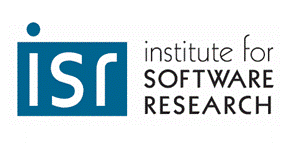
Institute for Software Research
School of Computer Science, Carnegie Mellon University
The VistA Ecosystem:
Current Status and Future Directions
James Herbsleb, Claudia Müller-Birn, W. Ben Towne
October 2010
With the recent national focus on health care and the infusion of funds
that HITECH will bring to Health IT (HIT), it is hard to imagine a more
appropriate time for the U.S. Department of Veterans Affairs (VA) to
formulate policy aimed at making its HIT system, VistA, more widely available.
In fact, judging by the transformative impact that open platforms have had
in many technology domains, it is likely that if done correctly, the VistA
software could form the basis of a thriving ecosystem that would drive down
cost and unleash innovation. The kernel of a socio‚technical ecosystem based
on VistA is functioning today outside of VA, but it needs help and support
from VA policies if it is to thrive, grow to its full potential, and help
to transform HIT.
Socio-technical ecosystems are extraordinarily complex, but research has recently begun to reveal the keys to software platforms that spark successful ecosystems. The primary difficulty is charting the course to growth and en route there is a set of fundamental issues that need to be addressed: What technical work must be done to evolve VistA into a suitable platform for use outside of VA? How should an ecosystem consisting of great numbers of vendors, service providers, IT departments, many classes of users, VA, non-profits, and many other types of players be governed so that coherence can be maintained, while still encouraging innovation? What kind of cultural and technological infrastructure must be deployed in order to support information dissemination and effective decision-making? How can a critical mass of adopters be attracted quickly to create viable business opportunities?
In this technical report, we help to answer such questions by mapping out the VistA ecosystem and comparing it with four well-established, highly successful software ecosystems. We begin by providing the results of a year-long qualitative study of the current VistA ecosystem. For this study we conducted interviews with stakeholders, examined documents, e-mail lists, and other sources, to create an up-to-date view of VistA development and distribution, and the people and organizations outside VA who are involved with it. Second, we performed four smaller-scale case studies of long-lived, thriving ecosystems based on software platforms: Apache, Eclipse, GNOME, and Mozilla. We looked for similarities and differences across these four cases, and then applied what we learned to the current state of VistA. Based on this analysis, we discuss ways of moving VistA forward, capitalizing on lessons from successful platforms.
86 pages
Return to:
SCS Technical Report Collection This page maintained by reports@cs.cmu.edu
School of Computer Science homepage